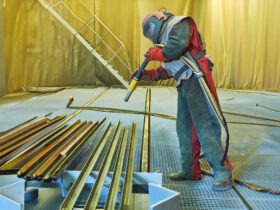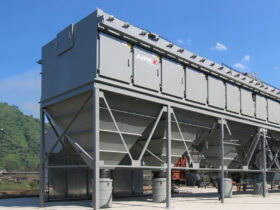ABRASIVE BLASTING
Issues Encountered During Our Interventions
Dust
Particles generated by this application field accumulate quickly and must be addressed efficiently.
Visibility
Clear vision may be compromised by the accumulation of particulate matter.
Explosion Hazard
Dust particulate from some materials may be flammable and/or combustible.
Risks Associated With Abrasive Blasting: What Do You Need To Know?
Treating surfaces via dry blasting generates a huge amount of dust and raises specific capture issues. When preparing components for painting or finishing, or even when cleaning structures, there are a number of risks that you need to watch for. Various factors come into play:
- What types of particles are released from your surface treatment processes – a combination of substrates and abrasives?
- Are there any deflagration risks associated with your processes? Do they produce dusts containing explosive metals, like aluminium?
- Do you have capture, transporting and collection measures in place tailored to blasting dust (e.g. a blast booth dust collector or a sandblaster dust extractor)?
Abrasive Blasting: Protecting Workers’ Health!
Whether you use abrasives like sand or crushed walnut shells, minerals (aluminum or silica oxides) or metallic shot (aluminum or steel), you must protect your workers’ breathing zone and control the risks of fire and explosion.
The dust collection challenge with abrasive blasting is to select a collection system that can handle the materials released from the substrates and abrasives… a considerable volume of particles! These abrasives alone account for up to 95% of the amount taken in. The remaining 5% is from the material that is blasted. These fine dusts can be potentially harmful and highly explosive.
Another issue with abrasive blasting is managing to ensure safe visibility for your blasting personnel, who are often in airtight booths, completely covered in a protective work suit. To do so, the environment must meet the air change requirements: it must remain below the workers’ vision obstruction threshold.





